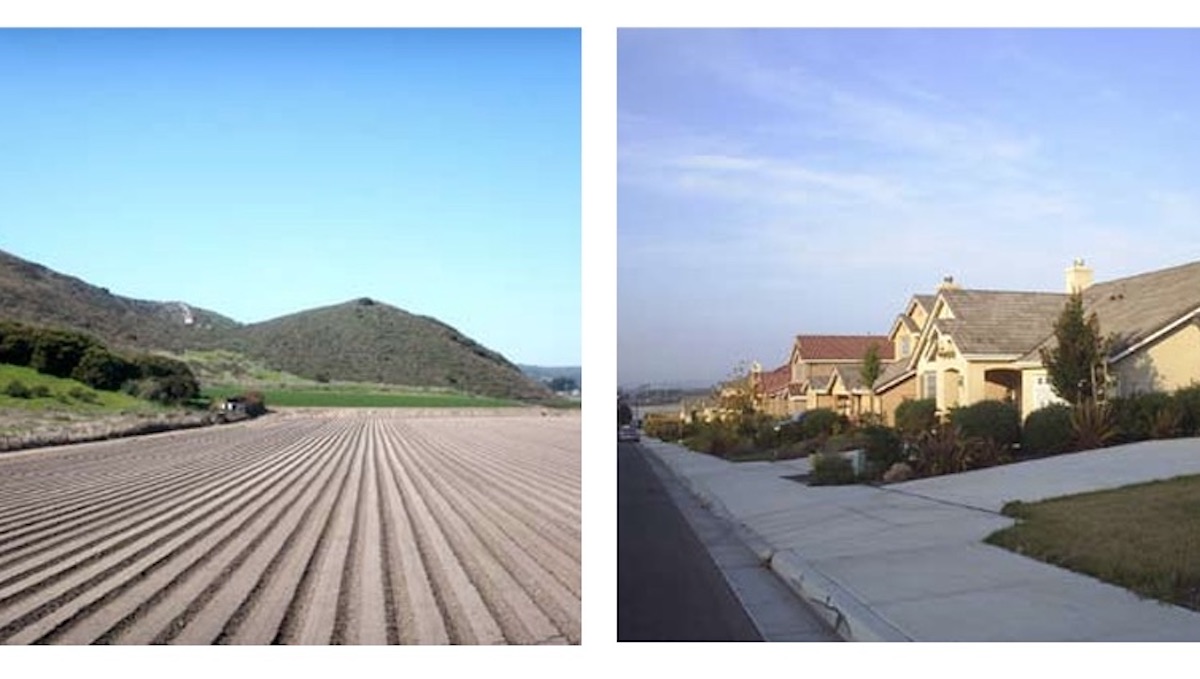Prime for Development?
Nearly 150 Acres of Prime Agricultural Land in Lompoc Is at Risk

In 1999, the City of Lompoc attempted to annex and develop 270 acres of prime agricultural land along Bailey Avenue. Environmental activists fought against the annexation at the time and won. The Local Agency Formation Commission (LAFCO) — the county’s decision-making body tasked with hearing these requests — denied the City of Lompoc’s request in favor of protecting prime agricultural land.
Now, more than 20 years later, Lompoc is trying its luck once again. Lompoc has requested that 148.3 acres of prime agricultural land along Bailey Avenue be brought into its urban Sphere of Influence; a preliminary step toward the goal of eventually annexing and developing the area.
There is no question that the county is in desperate need of more housing. With virtually no vacant units along the South Coast, skyrocketing rents, overcrowding, and habitability issues, it is clear that more housing needs to be built to meet the needs of the community. However, decision makers need to be strategic about what type of housing is built and where. Housing does not need to be built away from employment centers at the expense of some of the most productive prime agricultural parcels in the county.
In Santa Barbara County, the majority of our carbon emissions can be attributed to vehicle miles traveled (VMTs) from people commuting from their homes to their jobs and back again. This is due to the jobs-housing imbalance: There are more jobs and less housing in South County, and in North County there are fewer employment opportunities but more options for housing. This imbalance leads to a host of other problems in addition to increased emissions: When the recent storms closed highways 101 and 154, many businesses had to put their workers up in hotels because people could not drive back to their homes. Once the storm had passed and the skies were sunny and clear, the roads were still closed. Many businesses and schools had no choice but to keep their doors closed because their employees could not make their usual daily commute to work.
New housing on Bailey Avenue just outside of Lompoc would do very little to reduce VMTs in the county or lessen the jobs-housing imbalance. In fact, it would likely only exacerbate the problem by building more housing away from most employment opportunities.
For housing justice advocates in Santa Barbara County, the issue is more complicated than simply encouraging housing development on every empty parcel within the county. For environmental justice advocates, it is more complicated than opposing all development on open space. There are some environmental concessions that will need to be made to provide the housing necessary to sustain our local workforce. However, when considering possible sites to develop for housing, prime agricultural land does not need to be on the table.
Priority for development should go to the undeveloped vacant parcels within Lompoc. There are plenty of opportunities for infill housing projects that could meet the city’s current housing needs without expanding the city limits. There are parcels that are close to existing services: transit centers, grocery stores, hospitals, schools, and job centers. Building closer to existing activity hubs not only can help reduce vehicle miles traveled, but also can result in denser, more affordable housing.
The Cortese-Knox-Hertzberg Act, the governing law of LAFCO, explicitly directs the decision makers to prevent urban sprawl, encourage orderly growth, and preserve and protect prime agricultural lands. Please join Santa Barbara County Action Network (SBCAN), the Environmental Defense Center (EDC), agriculturalists, and environmentalists in urging LAFCO to uphold its duty to protect prime agricultural parcels and deny Lompoc’s request.
Written public comments can be submitted via email before Tuesday, January 31 at 5 p.m. to natasha@sblafco.org and lafco@sblafco.org. The meeting will be on Thursday, February 2 at 1 p.m. via Zoom and in the Santa Maria Board of Supervisors Hearing room (511 E. Lakeside Parkway, Ste 141). The Zoom link and agenda will be posted at this link closer to the meeting date: sblafco.org/meetings.
Nadia Abushanab is the advocacy and events director for the Santa Barbara County Action Network (SBCAN), which partners with the Independent through the Mickey Flacks Journalism Fund on environmental and social justice issues.



